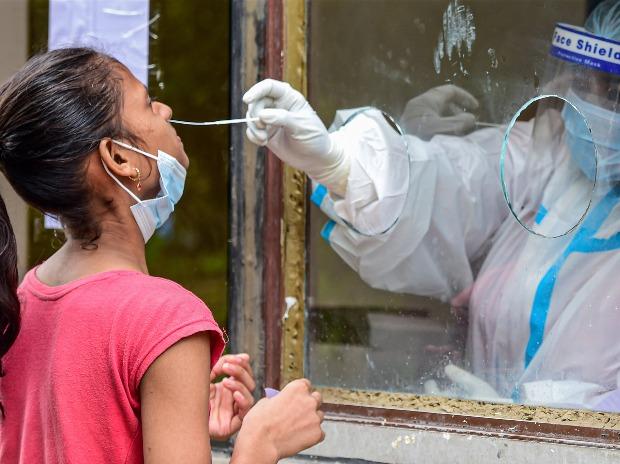Hit by the economic slump due to Covid-19, banking systems in emerging markets like India, Mexico, and South Africa will be slower to recover to 2019 levels and are likely to rebound only beyond 2023, according to rating agency Standard and Poor’s (S&P).
The agency released a report today entitled "Global Banking: Recovery Will Stretch To 2023 And Beyond".
The Indian banking sector is considered a late exiter. Its recovery will be longer. But some ratios may return more quickly to levels as they were weak prior to the onset of Covid-19 (in contrast with many other jurisdictions).
There were significant asset-quality issues in India prior to the onset of Covid-19, while asset quality was on an improving trend in many other jurisdictions, the rating agency said.
Given the banks' relatively strong profitability, there seems to be some cushion to absorb the anticipated weak performance in the loan portfolio.
Recovery to pre-crisis levels could occur for the Chinese banking system by end-2022. Other emerging markets may recover in 2023 or later. The full effect of the asset quality deterioration on banks' balance sheets is expected in 2021.
The path to recovery will be more painful for emerging markets such as India. The banks' recovery to long-term averages for key asset quality and profitability ratios will take years, it added.
Covid-19 and the oil price shock of 2020 are taking a heavy toll on global banks. The agency has taken 335 negative rating actions globally since the outbreak began. “We anticipate it will be difficult for the financial strength ratings on financial institutions to return to pre-crisis levels”, it said.
Rating agency does not expect the world's largest banking sectors, including more than half of G20's, to recover to pre-Covid-19 levels until 2023, or beyond.
Recovery will vary across banking jurisdictions. There is expectation of an economic rebound in 2021 following the release of a vaccine by about the middle of that year. “We anticipate a lag between when an economic recovery takes hold and when the credit strength of banks stabilises”, S&P added.
Even for the least affected--the likely early-exiter banking jurisdictions--stabilisation and recovery may take a full 18 months or more after an economic rebound.
There will be much uncertainty on the recovery pathway. Banking sector recovery will not just depend on the economic recovery. It would also be influenced by the nature and extent of the economic damage affecting firms and households prior to the onset of the economic recovery, and the extent to which this will hit banks, the agency added.
In a separate release, India Ratings said non-bank financial companies (NBFC) will take a long time to return to normalcy and asset quality concerns will continue to hamstring the sector, said India Ratings in its half yearly outlook for the sector.
“Although the liquidity and funding environment has improved for better rated entities post July, there would be asset quality issues impacting overall profitability (for the sector) in FY21 and beyond," the rating agency said.
“Thus, NBFCs have increased their focus on collections and have tightened underwriting standards; portfolio growth would take a back seat," India Ratings said, adding, the book under moratorium has progressively declined for all segments, and collection efficiency has improved from April to August, but collection levels are far lower than pre-COVID levels.
The rating agency maintains a negative outlook for the NBFC and housing finance company (HFC) sector.
Growth in assets under management would be flattish for NBFCs, against the earlier estimate of 8-10 per cent growth year on year, and in lower single digits for housing finance companies in FY21.
However, capitalisation remains reasonable, given the muted growth outlook, to absorb moderate asset quality stress. The securitisation market should open up for a significant number of transactions, once pool delinquency data starts flowing in and stabilises, thereby improving investor confidence. On the other hand, the agency expects pent-up demand from investors for assets, and supply from originators for liquidity generation, may drive securitisation volumes.
The moratorium book has progressively declined for all segments, and collection efficiency has improved from April to August 2020. But the collection levels are far lower than pre-COVID levels. Slippages could be higher for certain segments, resulting in higher credit costs.
The proportion of restructured books of the total assets under management could be in high single digits, while there could be higher asset quality pressures in the commercial vehicles (CV), real estate loans and big-ticket loans to SMEs, the rating agency said.
Micro-small and medium enterprises (MSME) will be a pain point for the NBFC sector, but debt servicing capabilities of tractor loan borrowers have improved due to a good rural economy.
 Dear Reader,
Dear Reader,
Business Standard has always strived hard to provide up-to-date information and commentary on developments that are of interest to you and have wider political and economic implications for the country and the world. Your encouragement and constant feedback on how to improve our offering have only made our resolve and commitment to these ideals stronger. Even during these difficult times arising out of Covid-19, we continue to remain committed to keeping you informed and updated with credible news, authoritative views and incisive commentary on topical issues of relevance.
We, however, have a request.
As we battle the economic impact of the pandemic, we need your support even more, so that we can continue to offer you more quality content. Our subscription model has seen an encouraging response from many of you, who have subscribed to our online content. More subscription to our online content can only help us achieve the goals of offering you even better and more relevant content. We believe in free, fair and credible journalism. Your support through more subscriptions can help us practise the journalism to which we are committed.
Support quality journalism and subscribe to Business Standard.
Digital Editor

RECOMMENDED FOR YOU